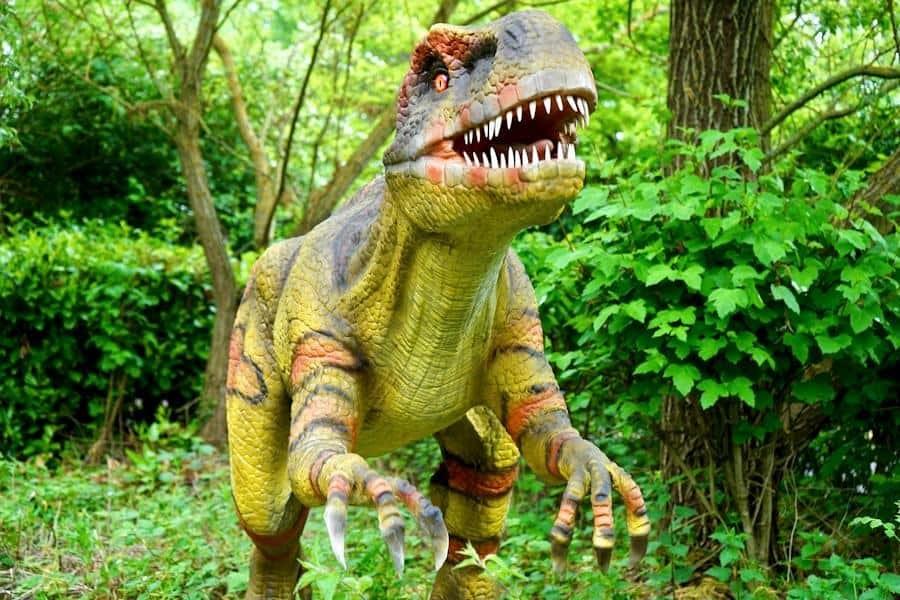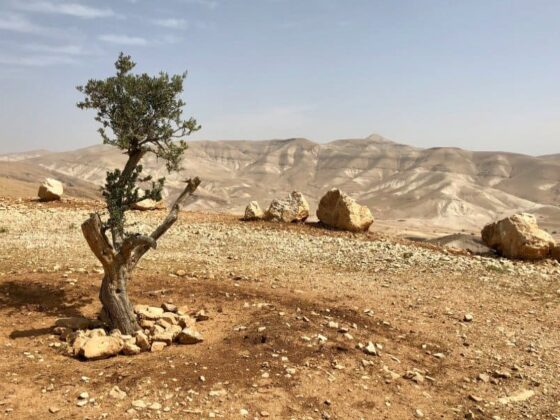Pennsylvania, rich in geological history, has long been a focal point for paleontological studies, offering a unique window into the prehistoric world. This article delves into the fascinating era when dinosaurs roamed this region, exploring the types of dinosaurs that called Pennsylvania home. From the lush, fern-covered landscapes of the Mesozoic era to the significant fossil discoveries that have shaped our understanding, we journey through time to uncover the ancient giants that once dominated these lands. By piecing together geological evidence and fossil records, we reveal the diverse array of dinosaurs that thrived in Pennsylvania, offering insights into a world millions of years in the making.
What dinosaurs lived in Pennsylvania?
In Pennsylvania, the dinosaur era was primarily represented by the tracks and traces of these ancient creatures rather than complete skeletons. The most common evidence of dinosaurs in this region comes from footprints found in sedimentary rock layers. These tracks suggest the presence of small to medium-sized theropods (bipedal carnivores) and potentially some ornithopods (bipedal or quadrupedal herbivores). Due to the state’s geological history, particularly the prevalent rock types, finding complete dinosaur skeletons has been challenging. Therefore, while we don’t have a detailed roster of specific dinosaur species that lived in Pennsylvania, the fossilized footprints hint at a diverse range of dinosaurs that once roamed its ancient landscapes.
Overview Of Pennsylvania’s Geological History
Pennsylvania’s geological history is a fascinating and complex narrative that spans over a billion years, marked by dramatic shifts in landscapes, climates, and ecosystems. This history is crucial in understanding the region’s past and present geographical and ecological characteristics.
Precambrian and Early Paleozoic Eras (Before 541 Million Years Ago): During the Precambrian, Pennsylvania was primarily submerged under an ancient ocean. The Earth’s crust in this area was still forming, leading to the creation of the oldest rocks found in the state. As the planet transitioned into the Paleozoic era, the region experienced significant geological activity. The formation of the Appalachian Mountains began in this era, primarily during the collision of tectonic plates.
Middle to Late Paleozoic Era (541 – 252 Million Years Ago): This era is known for forming vast coal deposits, indicative of lush, swampy environments with abundant plant life. The state was periodically submerged under shallow seas, depositing various sedimentary rock layers. During the Carboniferous period, particularly in the Pennsylvanian epoch (named after Pennsylvania due to the extensive study of its coal deposits), large forests of ferns and other plants thrived, which later fossilized to become coal.
Mesozoic Era (252 – 66 Million Years Ago): The Mesozoic is famously known as the Age of Dinosaurs. This era was marked by a significant shift from a predominantly marine environment to more varied landscapes in Pennsylvania. The earlier part, the Triassic period, was characterized by arid conditions, while the later Jurassic and Cretaceous periods saw more humid climates. The region’s geology from this era includes sedimentary rocks that have preserved dinosaur footprints and other fossils.
Cenozoic Era (66 Million Years Ago to Present): After the dinosaur extinction at the end of the Mesozoic, Pennsylvania’s landscape continued to evolve. The Appalachian Mountains eroded, creating the rolling hills and valleys characteristic of the region today. Throughout the Tertiary and Quaternary periods, the climate oscillated between warmer and colder phases, including the ice ages, further shaping the topography through glacial activity.
Modern Geological Influences: Today, Pennsylvania’s geological diversity includes rich mineral deposits like coal and natural gas, extensive forests, major river systems, and the enduring Appalachian Mountains. This diversity directly results from the complex geological processes over millions of years, influencing the state’s natural resources, biodiversity, and even its human history and economic development.
Types Of Dinosaurs In Pennsylvania
The types of dinosaurs that lived in Pennsylvania, as evidenced primarily through fossilized footprints and traces, reveal a diverse range of species. While complete skeletons are rare due to the state’s geological characteristics, the trackways and traces found offer glimpses into the prehistoric life that once thrived in the region. Here’s a more detailed look at these dinosaur types:
Theropods:
These bipedal carnivorous dinosaurs are the most frequently identified from the fossil tracks found in Pennsylvania. The footprints suggest a variety of sizes, from small, agile hunters to potentially larger predators. Common characteristics of theropods include sharp teeth, clawed hands, and a generally lean build adapted for hunting. While the exact species are unknown, the variety in footprint sizes hints at a diverse theropod population.
Ornithopods:
Known for their adaptability, ornithopods were primarily herbivorous dinosaurs that walked on two legs, though some could also move on all fours. In Pennsylvania, footprints attributed to this group suggest their presence. This group includes dinosaurs like the Iguanodon and Hadrosaurs. Their footprints are characterized by three-toed marks, often with a wider stance than the theropods.
Sauropods:
Though less common, some evidence suggests that sauropods may have inhabited Pennsylvania. These gigantic, long-necked herbivores left distinct, large, round footprints. However, Pennsylvania’s geological conditions have made finding definitive sauropod fossils challenging. If present, these gentle giants would have been among the most enormous creatures to roam the region.
Ankylosaurs:
While direct fossil evidence is lacking, the possibility of ankylosaurs, the heavily armored dinosaurs living in Pennsylvania, cannot be discounted. Known for their bony plates and clubbed tails, these herbivores would have left unique footprints, distinct from other herbivorous dinosaurs.
Small Theropods/Dromaeosaurs:
Footprints resembling those made by smaller theropods or dromaeosaurs (often known as ‘raptors’) might also be present. These agile predators were smaller than their larger theropod cousins and known for their sharp claws and swift movements.
Possible Pterosaurs:
Although not dinosaurs, there’s a possibility that pterosaurs, the flying reptiles of the Mesozoic era, may have inhabited the skies above Pennsylvania. Evidence for these creatures would be scarce as they would leave little to no trace on the ground.
Trace Fossils and Coprolites:
Beyond footprints, other trace fossils like nesting sites, caves, and coprolites (fossilized dung) could provide indirect evidence of dinosaur life. These traces help us understand the dinosaurs’ behavior, diet, and ecology in Pennsylvania.
Climate And Environment During The Mesozoic In Pennsylvania
During the Mesozoic era, the period known as the Age of Dinosaurs, Pennsylvania experienced significant changes in its climate and environment. This era, spanning approximately 252 to 66 million years ago, was characterized by a warmer global climate compared to today. In the Triassic period, Pennsylvania’s climate was predominantly arid and semi-arid, similar to a desert or savannah, evidenced by the red sandstone and sedimentary rocks from that period. These conditions were ideal for the early reptiles and the first dinosaurs.
The climate gradually became more humid and subtropical as the era progressed into the Jurassic period. This shift is marked by fossilized plants and coal deposits, indicating extensive lush, green vegetation and swampy environments. Such conditions were conducive to various flora and fauna, including enormous herbivorous dinosaurs like the sauropods.
By the Cretaceous period, the last phase of the Mesozoic, Pennsylvania’s environment had evolved into a more diverse landscape. It likely included coastal plains, as evidenced by the discovery of marine fossils, suggesting that the sea levels were higher and parts of the state were submerged under shallow seas. The coastal areas would have supported a rich ecosystem with various life forms, both terrestrial and marine. The inland areas, meanwhile, continued to support dense vegetation, providing habitats for a range of dinosaur species.
Throughout the Mesozoic, Pennsylvania’s climate and environment were dynamic, undergoing significant changes that reflected the broader shifts occurring on Earth during this time. These changing conditions played a crucial role in the evolution and diversity of the dinosaurs and other life forms that inhabited the region. The fossil record, including plant and animal remains, paints a picture of a region once home to a rich and varied prehistoric ecosystem, thriving under the warm and humid conditions of the Mesozoic era.
Conclusion
Pennsylvania’s rich geological and paleontological history offers a unique glimpse into the Earth’s distant past. From its origins in the Precambrian era’s ancient oceans to the Appalachian Mountains’ formation and the coal-rich landscapes of the Carboniferous period, the state’s geology tells a story of dramatic transformations. The Mesozoic era, marked by the presence of dinosaurs, highlights a time of significant ecological change, leaving behind traces that continue to intrigue and educate us. This journey through time, from the lush, swampy forests of the Paleozoic to the diverse ecosystems of the Mesozoic and the shaping of modern landscapes in the Cenozoic, underscores the dynamic nature of our planet.
FAQ’s
Q. Have any dinosaur fossils been found in Pennsylvania?
A. While complete dinosaur fossils are rare, Pennsylvania is rich in dinosaur footprints and trace fossils, offering insights into the dinosaurs that once roamed the area.
Q. Where in Pennsylvania have dinosaur tracks been found?
A. Dinosaur tracks have been discovered in various locations, including state parks and rock formations, particularly in sedimentary rock layers.
Q. How old are the dinosaur tracks found in Pennsylvania?
A. The dinosaur tracks found in Pennsylvania are primarily from the Mesozoic era, dating back hundreds of millions of years.









